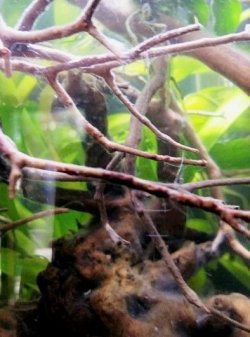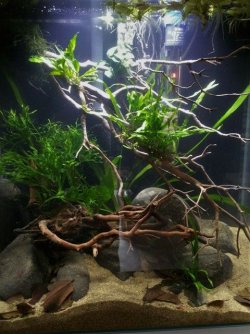MarcoPereira said:
This is not at all likely to be an issue related to the cycling itself. For one thing, in this much water (for the shrimp), ammonia would not increase from zero to a level to kill the shrimp in just two hours. And your test shows ammonia at zero anyway. Plus, in acidic water, ammonia changes into the ammonium ion form and is basically harmless. So, this is not a cycling issue.
Second possible is the GH and pH, but I would discount these here. Some shrimp need moderately hard water (for the calcium necessary for their exoskeletons), but there are shrimp than manage in softer water. I have next to no experience with shrimp, but my research indicates that the red cherry shrimp do well in soft and slightly acidic water, so again they would be very unlikely to be dead in so short a time.
That leaves us with some toxin in the water. Copper can kill shrimp, and this can leech from water pipes though usually only when these are fairly new. Copper in medications can kill shrimp, but you haven't used any (that you've mentioned anyway). Plant fertilizers such as Flourish Comprehensive contain copper, but the level in these are not sufficient to harm invertebrates unless they are over-dosed. You mention nothing of these.
So that brings me to that white fungus-like stuff; did you manage to get rid of all of this, and then do full tank water changes? And related, there could have been something toxic in the dead-shrimp/water you added that might have seeped into the wood especially.
Byron.
Hi Byron. Well, the last surviving shrimp is out this morning... there were two or three last night, but found a dead one already. I added 1 ml of Flourish after introducing shrimp, I cleaned all the wood with Hydrogen Peroxide and soaked it in a bucket with hot water and the peroxide also. I then sun dried the wood before adding plants to it and then put in aquarium. As far, no more fungus.
Did not do a full water change, only about 25%, No meds and no other additives... or any more ammonia water. Added some java moss from pond which i rinsed very well and added some almond leaf bits and an oak leaf both of which had been pre boiled. Purigen is in filter also.
I drip acclimated them for 15 minutes as lfs said to, maybe in hindsight, should have been more likely and hour. Could that have been it? they got shock?
I wouldn't think shock from your acclimation, but again I will leave this for the members more experienced with shrimp.
I would do a complete water change, not 25%. Thik of it mathematically...something is in the water, obviously, to cause such massive quick deaths. Removing 25% of the water is only cutting this by 1/4, so 3/4 remains. We don't know what this substance may be, but the aim should be to remove all or as much as possible, hence a complete water change.
Was the hydrogen peroxide used before these deaths? I personally would use nothing but water, boiling is fine, on wood. Any liquid substance will be absorbed into the wood, and there is no way to know when or how fast it will leech out.
There is also of course the wood itself. We've no idea where this came from (originally, I mean). To illustrate. In 1997 my fish in one tank slowly became lethargic. The corys eventually just sat on leaves or wood, respirating very rapidly. Any new fish died usually overnight. I went through this for several weeks, testing everything imaginable, and doing the most time-consuming and fussy water changes. Nothing helped. Tests showed nothing. Finally I contacted a hobbyist who happened to be the Curator of Freshwater Fish at the Vancouver Aquarium. His first suggestion was copper, but tests proved nil. Then he turned to the wood. I won't detail the procedure used, but the end result was that some toxic substance (never did find out what) had been leeching from one or more of the chunks of wood. I tossed all the wood out, did a major cleaning, new filter media--and end of problem. It never returned. Point with this is that it is not always easy to find the source of trouble, which is why we test for everything we can, do major water changes, examine all additives, etc.
In your situation, I would be concerned over the dead-shrimp ammonia, and the white slime/fungus on the wood. I previously told you about my experience with wood fungus. I have lots of wood in my tanks, but twice it has been the issue. Of course, there may be something else we're missing here. If you still have live shrimp that have been removed, and they remain alive and appear OK wherever they are now, it would confirm something is in the water or the hardscape.
Byron.



